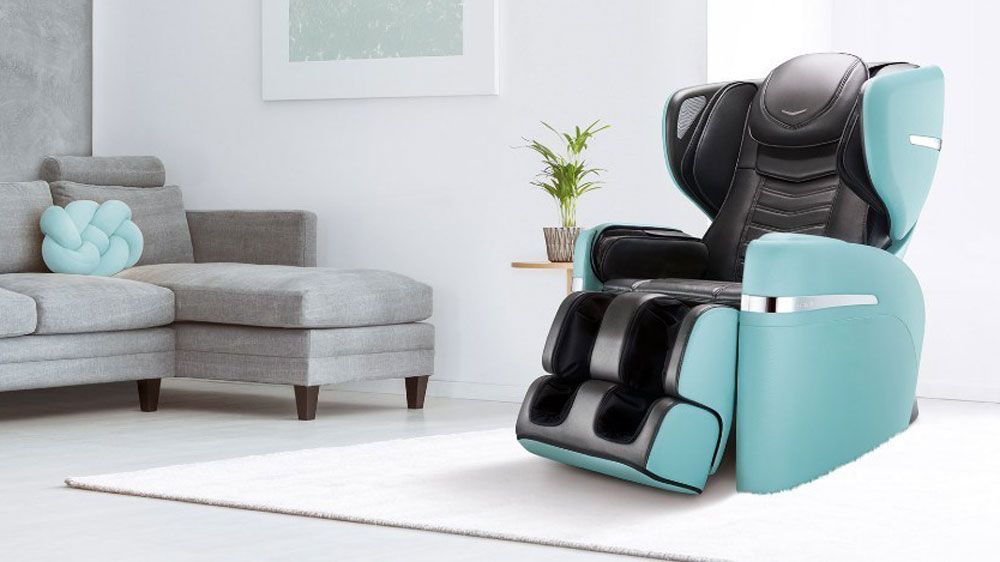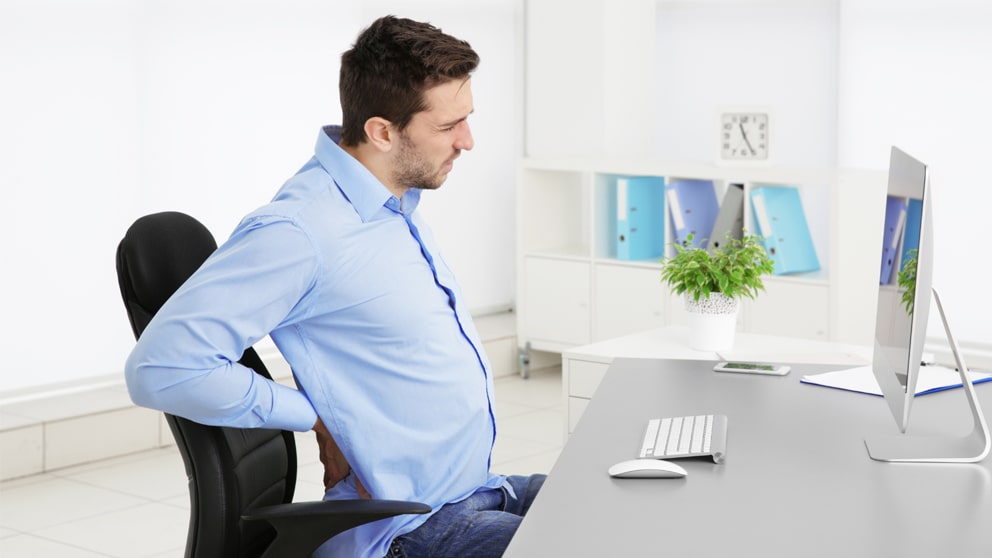Understanding Upper Back Pain and Chairs: Chair For Upper Back Pain

Yo, so upper back pain is like, super common, and it can totally suck. It can make it hard to do stuff you love, like hanging out with friends or playing video games. And guess what? Sitting for long periods can be a major culprit.
Causes of Upper Back Pain
It’s important to know what’s causing your upper back pain so you can find the right solution. Here are some common culprits:
- Poor Posture: Slouching or hunching over your phone or computer can put a lot of strain on your upper back. It’s like, your back muscles are trying to hold up your head and shoulders, but they’re not built for that kind of pressure.
- Muscle Strain: If you’re doing a lot of repetitive movements, like lifting heavy objects or typing on a computer, you can strain your back muscles. It’s like, your muscles are getting tired and overworked, and they’re starting to hurt.
- Injuries: A direct injury to your upper back, like a fall or a car accident, can cause pain and stiffness. It’s like, your back needs time to heal.
- Medical Conditions: Some medical conditions, like arthritis or scoliosis, can also cause upper back pain. It’s like, your body is having some trouble with its structure, and it’s affecting your back.
Prolonged Sitting and Upper Back Pain
Sitting for hours on end can totally mess with your back. It’s like, your body isn’t designed to be still for that long. Here’s why prolonged sitting can lead to upper back pain:
- Muscle Imbalances: When you sit for a long time, your back muscles can get weak and tight. It’s like, your muscles are losing their strength and flexibility.
- Reduced Blood Flow: Sitting for hours can restrict blood flow to your back muscles, which can make them sore and stiff. It’s like, your muscles aren’t getting the nutrients they need.
- Poor Posture: Slouching in a chair can put extra stress on your upper back, especially if you’re not using a supportive chair. It’s like, your back is trying to hold up your head and shoulders, but it’s not getting the support it needs.
Ergonomic Factors for Chair Suitability
If you spend a lot of time sitting, having the right chair can make a huge difference for your upper back pain. Here are some key ergonomic factors to consider:
- Lumbar Support: A good chair will have lumbar support to help keep your spine aligned. It’s like, your back is getting a hug to keep it in the right position.
- Adjustable Height: The chair should be adjustable so you can find the perfect height for your desk and body. It’s like, your chair should fit you like a glove.
- Armrests: Armrests can help take the strain off your shoulders and neck. It’s like, your arms are getting a break from holding you up.
- Seat Depth: The seat depth should be comfortable and allow your thighs to be parallel to the floor. It’s like, your legs are getting a good stretch and not feeling cramped.
Types of Chairs for Upper Back Pain Relief

Yo, so you’re dealing with upper back pain, and you’re looking for a chair that can help. No sweat, cuz there are a bunch of chairs designed to give your back the support it needs. We’re gonna dive into some of the best chairs for upper back pain relief.
Ergonomic Chairs for Upper Back Support
Ergonomic chairs are like the superheroes of the chair world. They’re built to support your body in a way that reduces stress and strain, especially in your upper back.
- Lumbar Support: Think of lumbar support as your back’s BFF. It’s a built-in curve that supports your lower back, which helps keep your spine in alignment. This is super important for preventing upper back pain, cuz a misaligned spine can lead to all sorts of problems.
- Adjustable Backrest: An adjustable backrest lets you customize the angle of your back support. This is key for finding the perfect position for your upper back. You can adjust it to match the natural curve of your spine, which helps prevent slouching and keeps your back from getting sore.
- Armrests: Armrests are like the sidekicks of the chair. They help to support your arms and shoulders, reducing stress on your upper back. Some armrests are adjustable, which allows you to find the perfect height and position.
Examples of Chairs for Upper Back Pain
Here are some specific chairs that are often recommended for people with upper back pain.
- Herman Miller Aeron Chair: This chair is a classic. It’s known for its mesh back, which provides excellent breathability and support. The Aeron chair also has adjustable lumbar support and armrests.
- Steelcase Leap Chair: The Leap chair is another popular choice. It has a flexible backrest that conforms to the shape of your back. It also has adjustable lumbar support, armrests, and seat depth.
- Haworth Fern Chair: The Fern chair is a more budget-friendly option that still offers excellent ergonomic features. It has adjustable lumbar support, armrests, and a breathable mesh back.
Choosing the Right Chair for Your Needs

Yo, finding the right chair for your back pain is like finding the perfect pair of jeans – it takes some effort, but it’s totally worth it. A good chair can be a total game-changer, especially if you spend a lot of time sitting.
Factors to Consider When Selecting a Chair, Chair for upper back pain
Choosing the right chair for your upper back pain is like finding the perfect fit for your jeans. Here’s a checklist of factors to consider when selecting a chair:
- Backrest Support: Look for a chair with a backrest that provides good lumbar support. This means the chair should have a slight curve that fits the natural curve of your lower back. It’s like a hug for your back.
- Seat Depth and Height: The seat depth should be deep enough to support your thighs without your knees being too high. The seat height should allow your feet to be flat on the floor with your knees bent at a 90-degree angle. This is like finding the sweet spot for your legs.
- Armrests: Armrests should be adjustable to provide support for your arms and shoulders. This can help to reduce strain on your upper back. Think of it as a break for your arms.
- Materials: Some materials, like mesh or breathable fabrics, can help keep you cool and comfortable. You want a chair that’s comfy and won’t make you sweat.
- Adjustability: Look for a chair that offers adjustable features like backrest height, seat depth, and armrest height. This allows you to customize the chair to your specific needs. You’re the boss of your chair!
- Style and Design: Choose a chair that you like the look of. This will make you more likely to use it. Don’t be afraid to get something that reflects your style.
- Budget: Consider your budget and set a price range for your chair. There are plenty of great chairs out there, no matter what your budget is.
Comparing Chair Types
Different chair types are good for different things, just like how different outfits are perfect for different occasions. Here’s a table comparing some popular chair types and their suitability for upper back pain conditions:
| Chair Type | Upper Back Pain Condition | Suitability |
|---|---|---|
| Ergonomic Office Chair | General Upper Back Pain, Poor Posture | Highly Suitable |
| Kneeling Chair | Lower Back Pain, Sciatica | Moderately Suitable |
| Gaming Chair | Short-Term Use, Comfort | Moderately Suitable |
| Ball Chair | Core Strength, Flexibility | Not Recommended |
Adjusting Your Chair for Optimal Posture
Once you’ve got your chair, you gotta make sure it’s set up for your body. Here’s how to adjust your chair for optimal posture:
- Backrest: Adjust the backrest so that it supports the natural curve of your lower back. This will help to reduce strain on your spine. You want your back to be supported, not slumped.
- Seat Depth: Adjust the seat depth so that your thighs are supported without your knees being too high. This will help to improve circulation and reduce pressure on your legs. You want your legs to be comfortable, not cramped.
- Armrests: Adjust the armrests so that your elbows are at a 90-degree angle and your shoulders are relaxed. This will help to reduce strain on your neck and shoulders. You want your arms to be supported, not strained.
- Footrest: If you need extra support, use a footrest to elevate your feet. This can help to improve circulation and reduce pressure on your legs. You want your feet to be comfortable, not dangling.